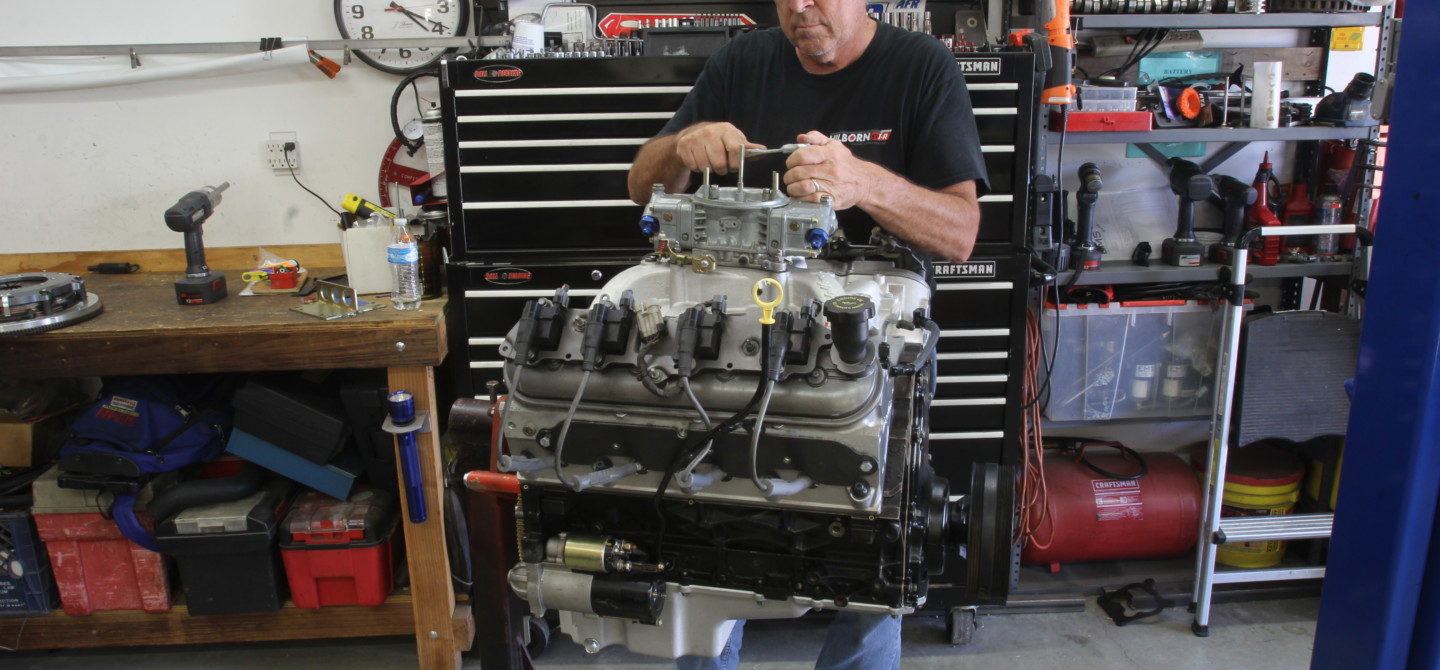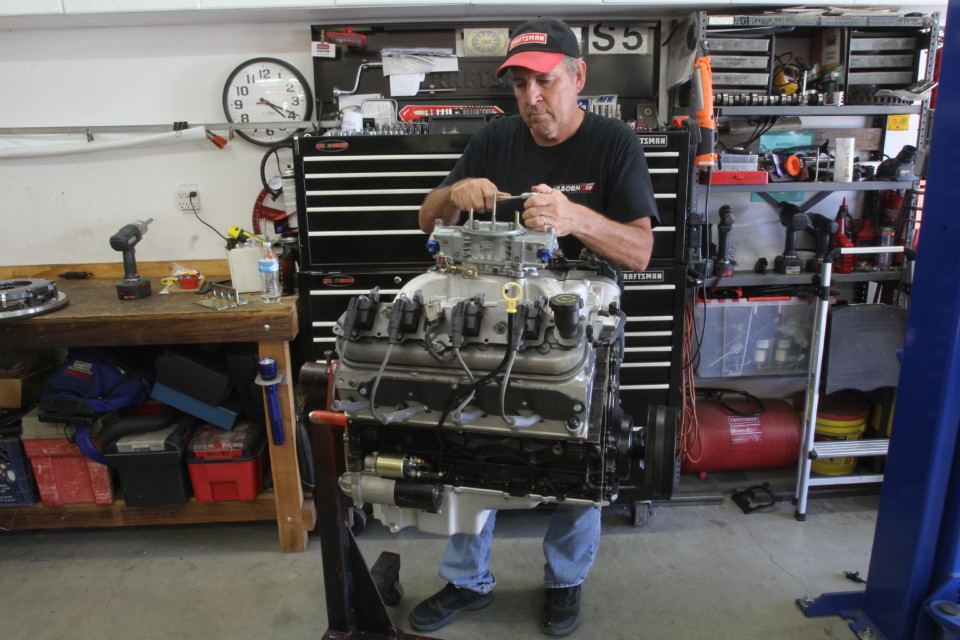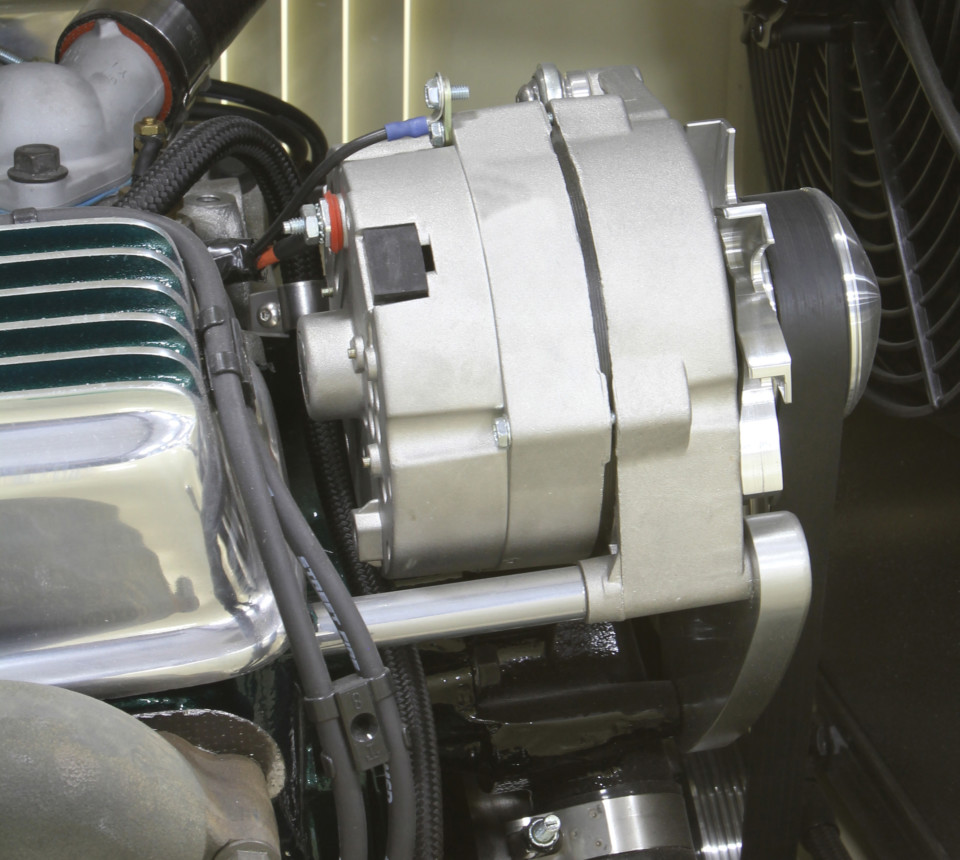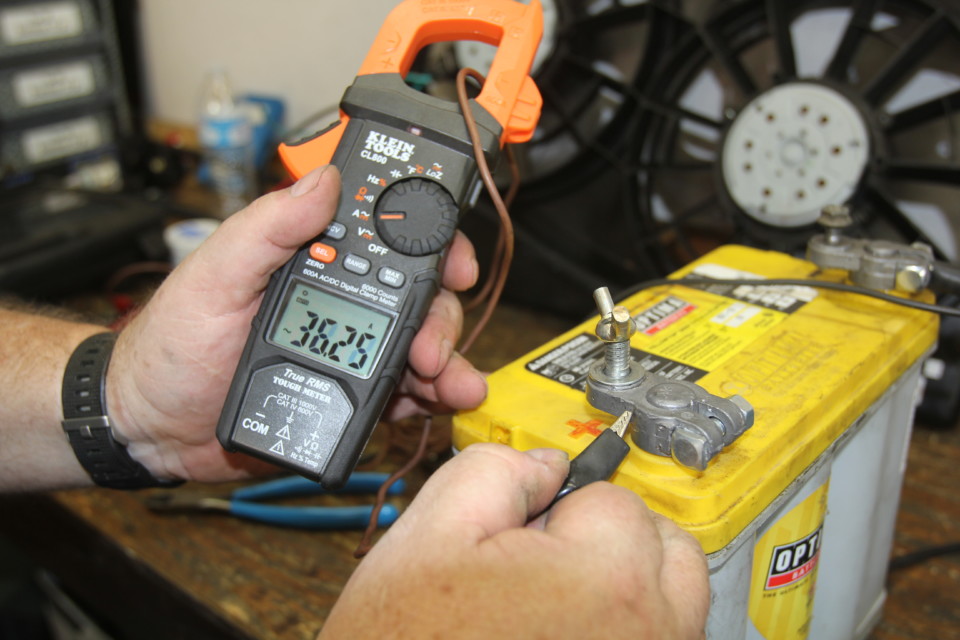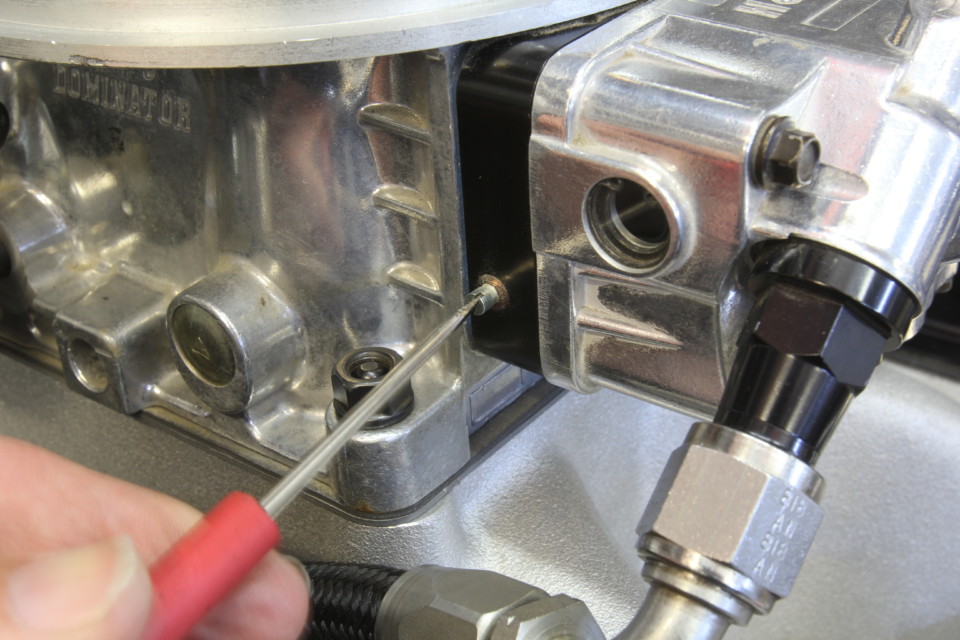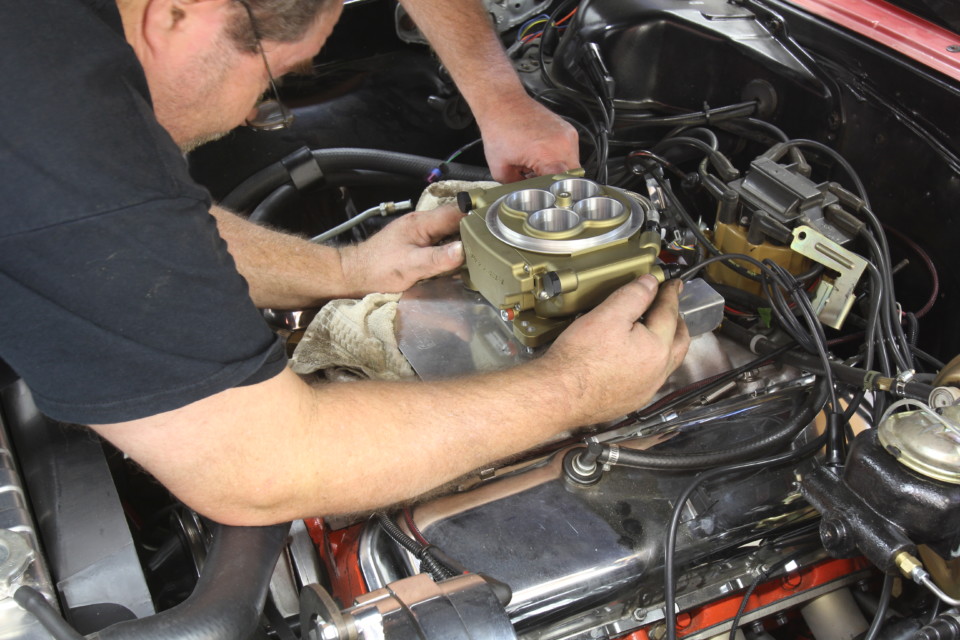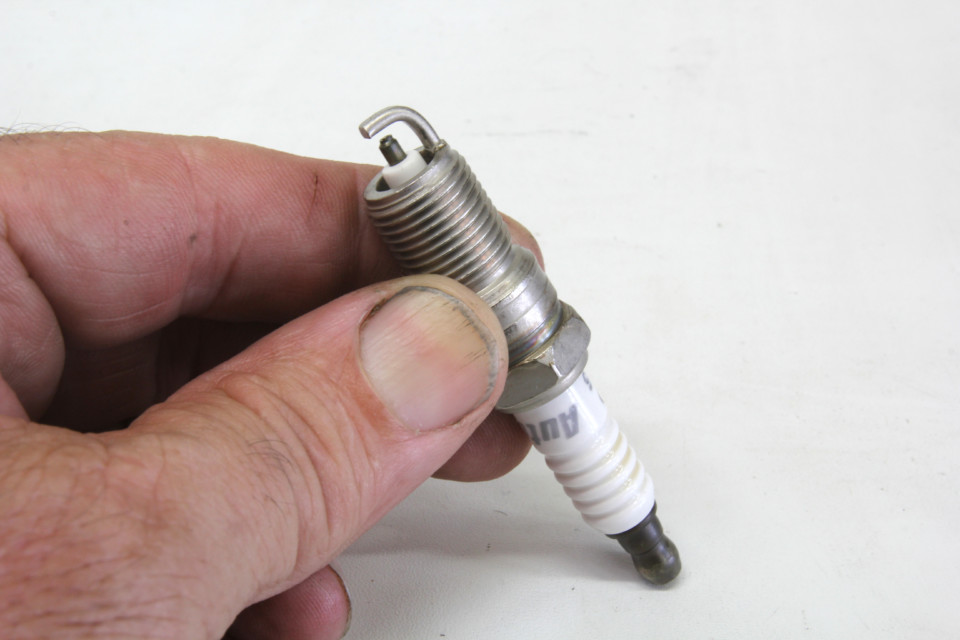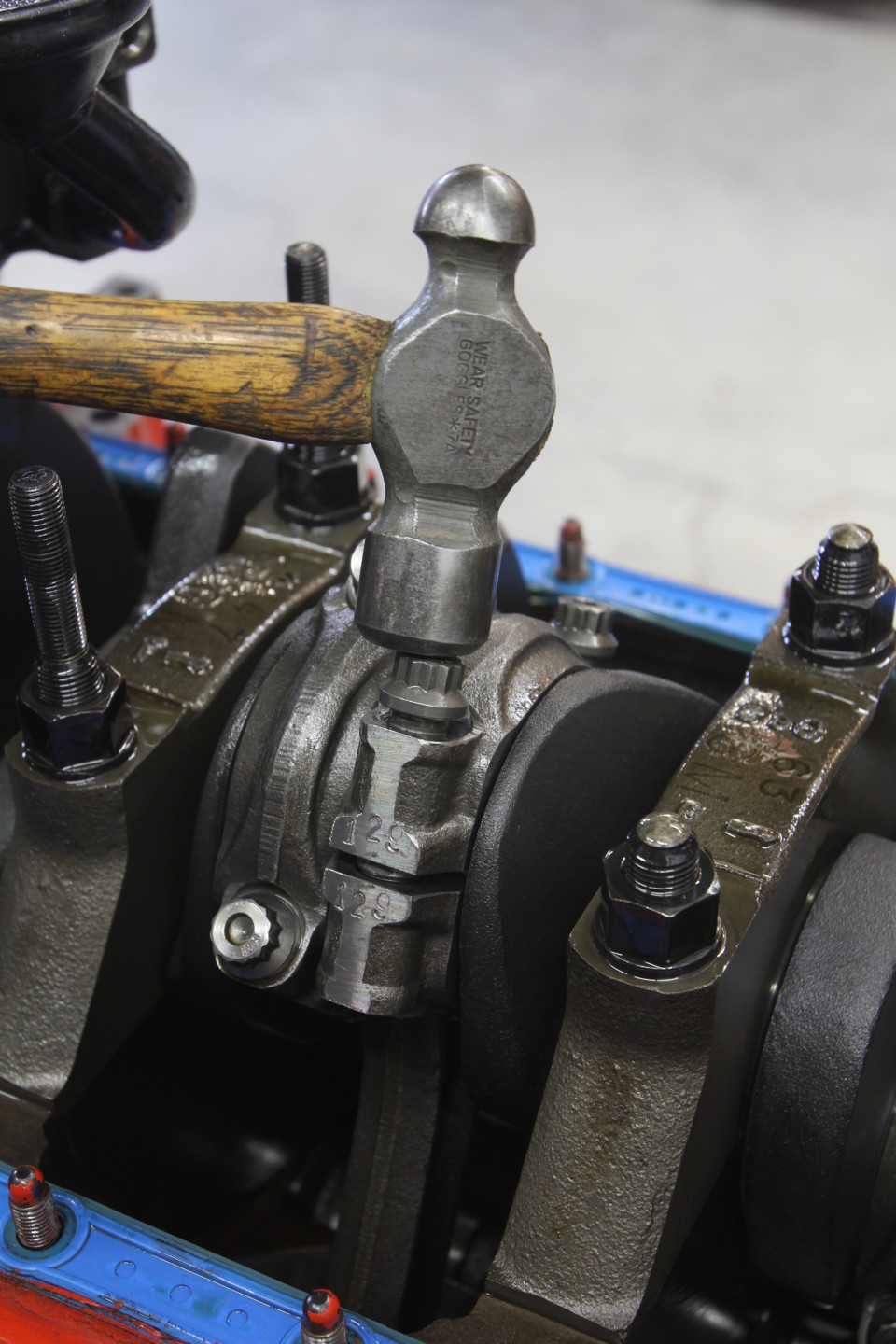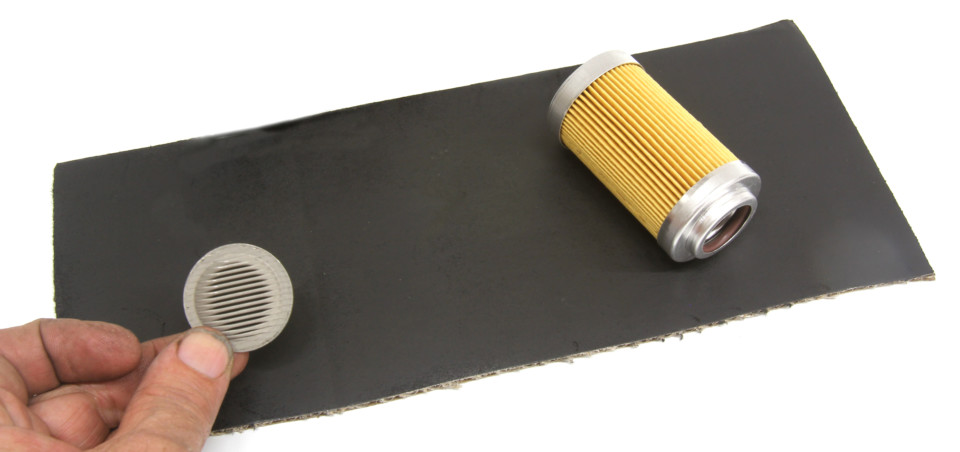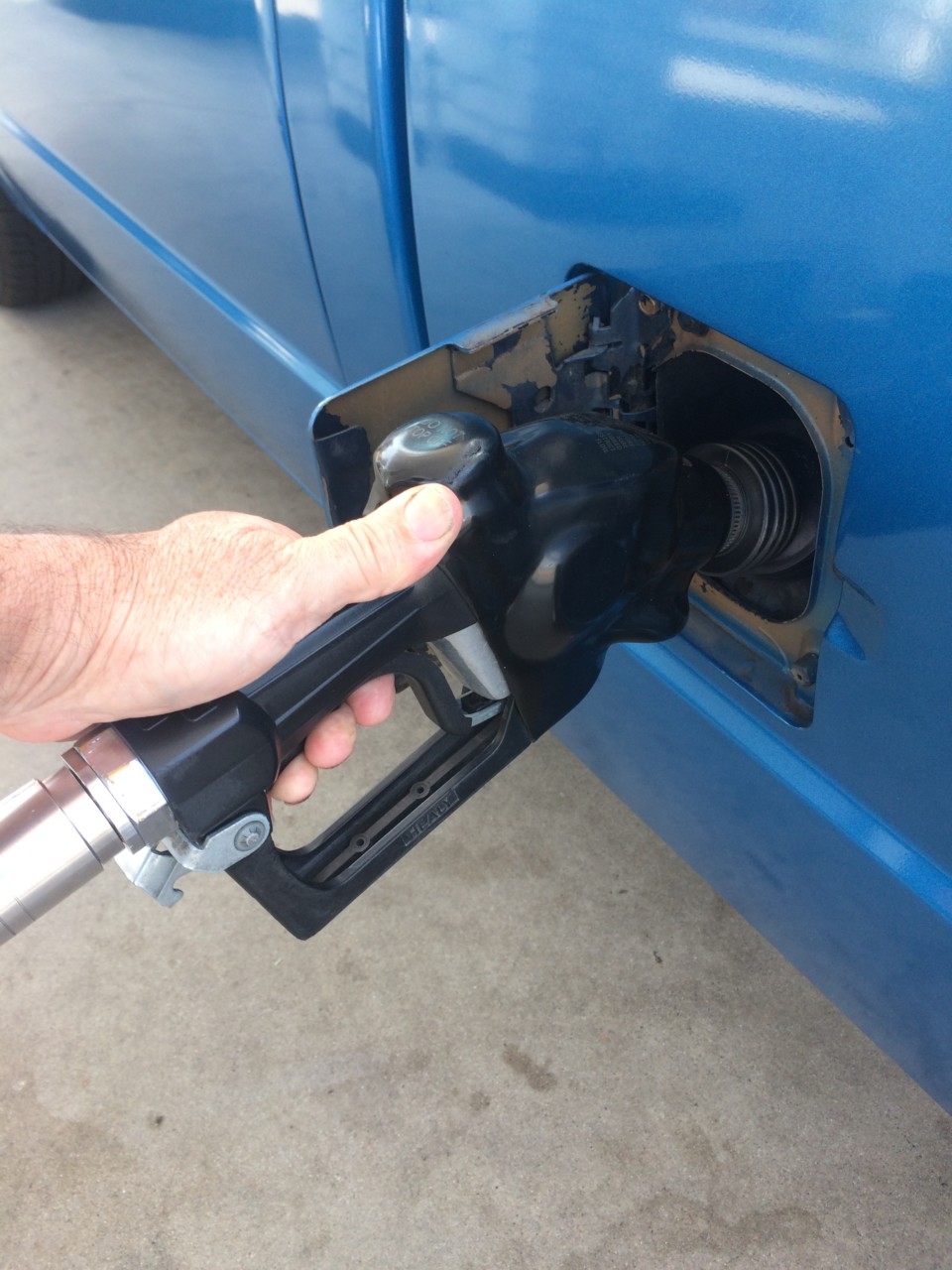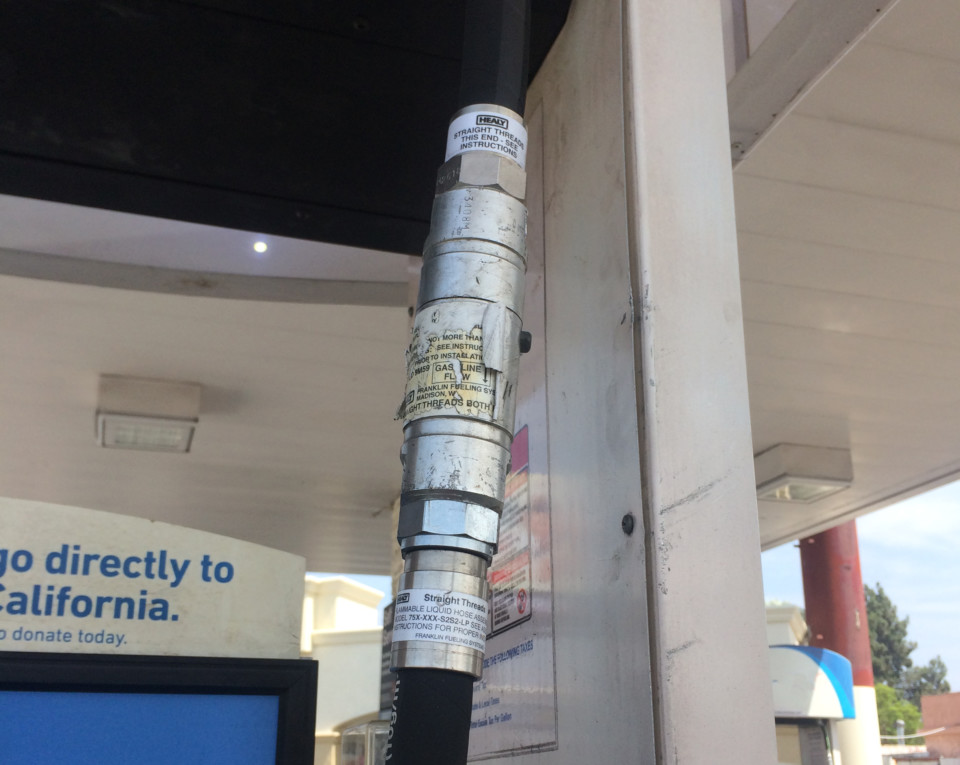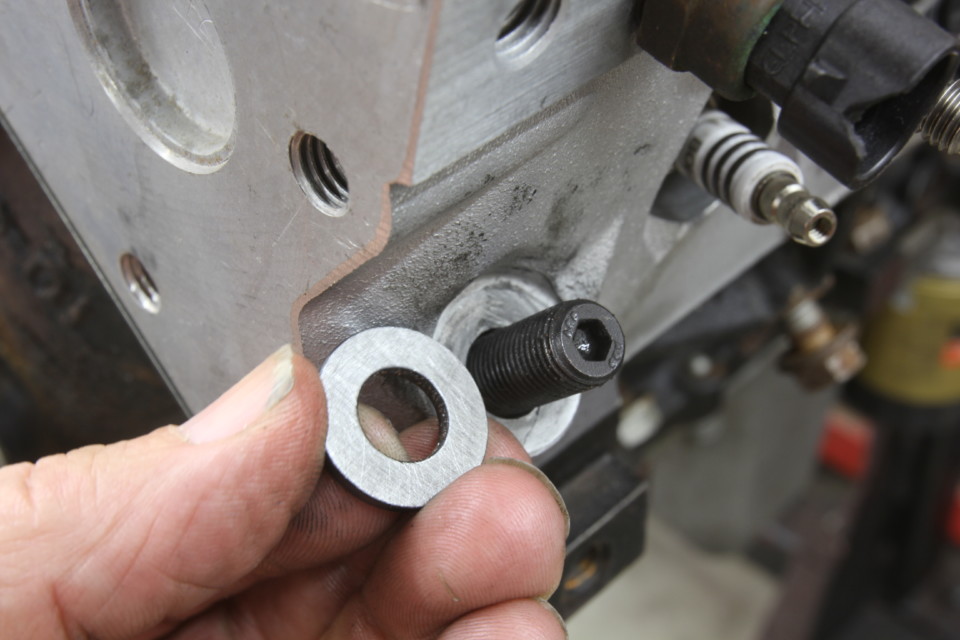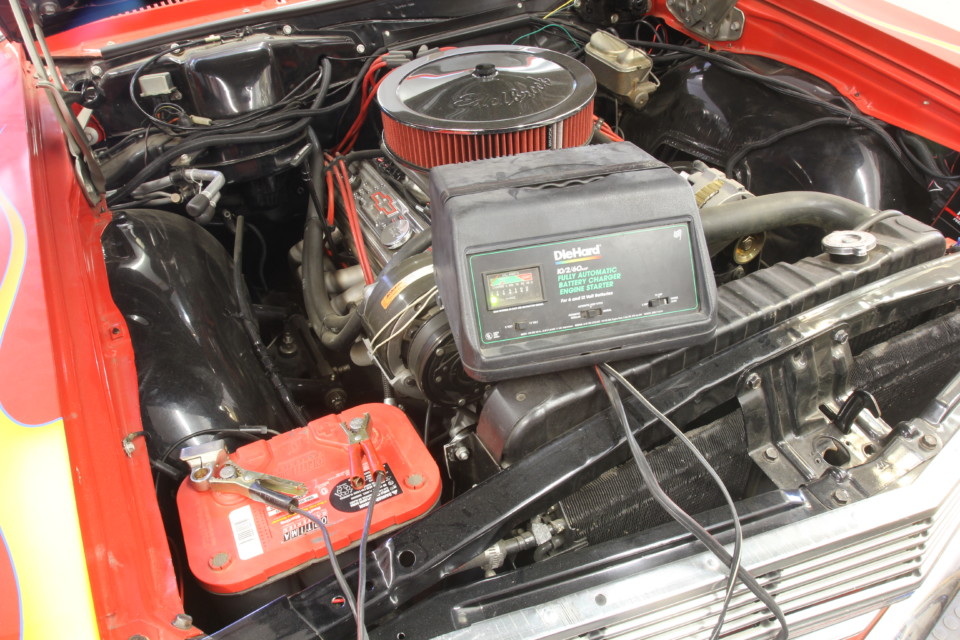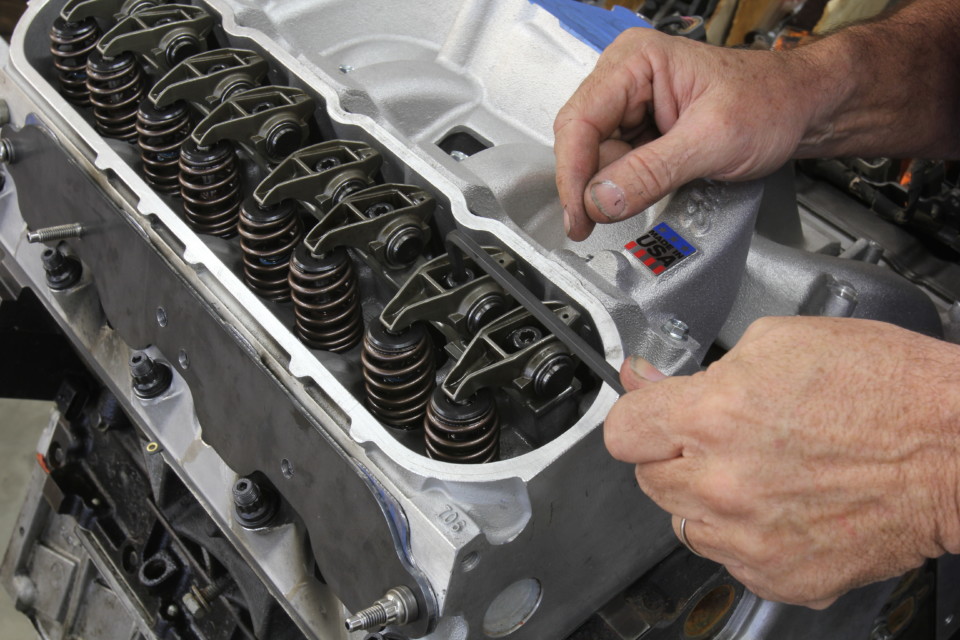Since you’re reading this, that means you’re probably a gearhead that likes to work on muscle cars. It’s a great form of therapy. Wrenching can be fun, but it can also trigger the occasional dilemma, like – how do I get that connecting rod cap off quickly and easily – and look like a professional while I’m at it?
We’ve got you covered. That one, plus nine others may help you the next time you begin the hunt for that AWOL 9/16 end wrench that has again, engineered an escape from the drawer. It’s the little things that often make the difference.
1. Alternator Efficiency
That high-output alternator in your cruiser may not be quite as good as you think. Maximum alternator output ratings are tested with the alternator at ambient temperature. Unfortunately, alternators operate in under-hood temps exceeding 125 degrees Fahrenheit which causes output to fall somewhat short of the claims.
We called Powermaster and learned the alternator output dyno sheet supplied with the alternator is indeed tested at ambient temperatures. They told us that a typical efficiency loss at a normalized temperature is roughly 15 percent. So a 100-amp alternator might only be capable of 85 amps at temperature. Plus, these numbers are most often achieved above idle.
Now that 100-amp alternator might be only capable of 65 to 70 amps at idle instead of its rated 100 amps. The photo above shows a 36-amp load from a pair of big electric fans. This is just a tech tidbit to keep in mind when adding twin electric fans, a big electric fuel pump, EFI, and a killer stereo.
2. Idle Mixture Trick
A simple carburetor idle mixture adjustment can make a measurable difference. We see street cars all the time with misadjusted idle mixture screws. With the engine off, turn each idle mixture screw in until it lightly seats and, count the total number of full and partial turns. Return that mixture screw to its original position and repeat the process with the second idle screw. If the carb has four idle mixture screws, perform this same procedure on all four.
It’s highly likely the screws are not adjusted the same. The next step is to simply make sure all the adjustments are the same number of turns. Hook up a vacuum gauge and a low-speed tachometer that will indicate changes of less than 100 rpm. With the engine at normal temperature, if the idle quality has deteriorated, adjust each idle mixture screw the same amount until the engine idles at its highest engine vacuum.
Make very slight adjustments and take your time to allow the engine to stabilize after each change. The goal is to establish the highest, most stable idle vacuum at the same idle speed. The key is to make the changes so the adjustments are balanced. In a recent effort, we were able to raise the idle vacuum from 9.5 inches to nearly 10.5 inches just by performing these simple steps. And the best part is – this costs nothing!
3. Prime Shot
Be aware of this little hiccup when diagnosing aftermarket EFI systems. If your electrical system diagnostics require switching the ignition on and off multiple times, be cognizant of the fact that each time power is enabled, the EFI system will initiate a shot of fuel into the intake manifold – especially with a cold engine. This improves initial startup and is just like pumping the throttle on a carburetor.
The problems begin when the ignition is engaged dozens of times over a short period of time during electrical troubleshooting. Much of that raw fuel will end up in the oil pan which will seriously deteriorate lubrication. The best way to avoid this is to disable the electric fuel pump by removing its inline fuse. Of course, once the work is completed, the first step will be to reconnect the fuse before attempting to start the engine.
4. Spark Plug Tales
There’s a pile of misinformation making its way around the internet that platinum and Iridium spark plugs don’t work and should not be used in older, normally aspirated hot rod engines and that these plugs should never be used in supercharged or turbocharged applications. The truth is exactly the opposite.
Iridium and platinum fine-wire plugs are mainly used to minimize center electrode erosion over thousands of engine miles. There’s also a contention that these fine-wire plugs will cause pre-ignition because these materials retain heat. The truth, according to Jerry Reeves, Director of Engineering at Autolite spark plugs, is that while iridium does have poor heat rejection characteristics, the wire – at 0.6 to 0.5mm (0.023-inch or thinner) – is too small to contribute to pre-ignition.
The cutaway photo reveals that fine-wire plugs use a copper center conductor with only the very end made from the precious metals. Reeves also told us that fine-wire iridium plugs are currently being used in several serious performance engines such as the supercharged Dodge Hellcat – and you can bet Chrysler tested the ‘expletive’ out of this before they decided it was good enough for 700-plus hp.
5. Rod Cap Removal
Connecting rod caps can often be difficult to separate from the rod when disassembling an engine. We like to use this simple trick – loosen the rod cap bolts to produce roughly a ¼-inch separation from the cap. Then lightly tap on the rod bolt head with a small hammer. This will loosen the cap allowing it to be removed.
6. Filter Facts
We recently read a magazine story that described an EFI-equipped car that had developed drivability issues. The problem was traced to the fuel delivery system. A tiny filter placed on the inlet side of the pump was clogged with debris. The suggested solution was to completely eliminate the 1-inch diameter pre-pump screen. That screen was clogged because it was clearly doing its job. The only problem was that it offered too little capacity before becoming a restriction.
The best solution would be to replace that small filter with a much larger 100-micron filter. The photo shows a small filter that, because of its small surface area, will quickly clog. The black background represents 100 square inches of filter area of the larger 100-micron filter shown. So which filter would you want to use – the 3 square inches of that little screen or the 100 square inches of the larger filter?
The most critical area in any fuel delivery system is the inlet side of the pump. A large, 100 square inch, 100-micron filter will do just that. Then add another 100 square inch 10-micron filter to protect the fuel injectors. Remember that a 10-micron filter screens finer particles than its 100-micron cousin. The 100-micron filter goes before the pump and a 10-micron after.
7. Pump Tip
Have you ever noticed a pump at the gas station that runs slow even though you’re the only customer pumping fuel? Our source at a major filter company tells us that gas stations are supposed to change their filters once a month, but sometimes they are a bit lazy. He tells us that if the pump runs slow, it could be because the filter is clogged with water or debris. If so, stop pumping and consider buying fuel elsewhere.
8. Washer Scratcher
The guys at ARP tell us that some customers are hurting head bolts (and studs) on GM LS, Ford Mod, and Chrysler Hemi late model engines. The issue is that the ARP washers can actually be too smooth and when combined with the excellent spot face machined into the heads on late model engines, the washer can become a bearing and spin as the head bolt is torqued.
What few enthusiasts realize is that 50 percent of the torque necessary to create a proper clamp load is used to overcome the friction between the bolt head and the washer. If the washer spins as the bolt is torqued – the washer acts like a bearing. This radically reduces the friction and excessive torque is applied to the fastener. This will feel funny like the bolt is stretching or the threads are pulling out of the block. Neither of those situations are good. If you experience that, immediately stop pulling on the torque wrench and look to see if the head bolt washer is turning.
The fix for washer movement is very simple. First, if at all possible make sure the spot face on the head is clean and dry. Next, lightly sand the head side of the washer (not the chamfered side) with 60-grit sandpaper and clean the washer to remove any grit. Put a light coating of ARP’s Ultra-Torque only on the head bolt side of the washer and torque the bolts normally. This is generally a good idea to do for all engines. This technique will also work with head studs.
9. Charge It – but be Careful
Battery chargers are notorious for shoving voltage spikes into the car’s electrical system, especially when charging at 10 amps or higher. This isn’t an issue with carbureted cars with minimal electronics, but for cars equipped with an aftermarket ECU, trans controller, or other electronic device, voltage surges can be harmful. This includes the new self-learning throttle body EFI systems.
The ideal situation is to charge the battery while it is disconnected from the vehicle – or – if that’s not possible – at least minimize the beginning amperage level. Never attempt to start a vehicle with the battery charger connected to the battery and never use the “Start Car” feature on a battery charger on an EFI-equipped car. This will certainly send a nasty voltage spike through the electrical system.
We recently saw this happen on a hot rod with an aftermarket EFI system where the battery charger appeared to spike the EFI and corrupted the tune. This is also true for race cars with 16-volt systems.
10. Power Preload
We’ll give credit to our dyno guru buddy Richard Holdener for testing this trick and discovering how well it works on LS engines. All GM LS engines use a net-lash system where once the rocker bolt is torqued, this also sets the preload on the lifter. Holdener tried a 0.100-inch longer pushrod on a 515 hp 383ci LS engine and gained over 14 hp. The longer pushrod reduces the amount of hydraulic cushion underneath the lifter piston which effectively adds a tiny bit of duration to the cam. Be careful to avoid bottoming the lifter when attempting this trick. Maintain at least a 0.040-0.050-inch cushion to the bottom of the lifter.
There you have it, 10 tech tips that will make your life easier the next time you’re wrenching on your ride, filling up at the pump, or prepping your wheels for long term storage.


